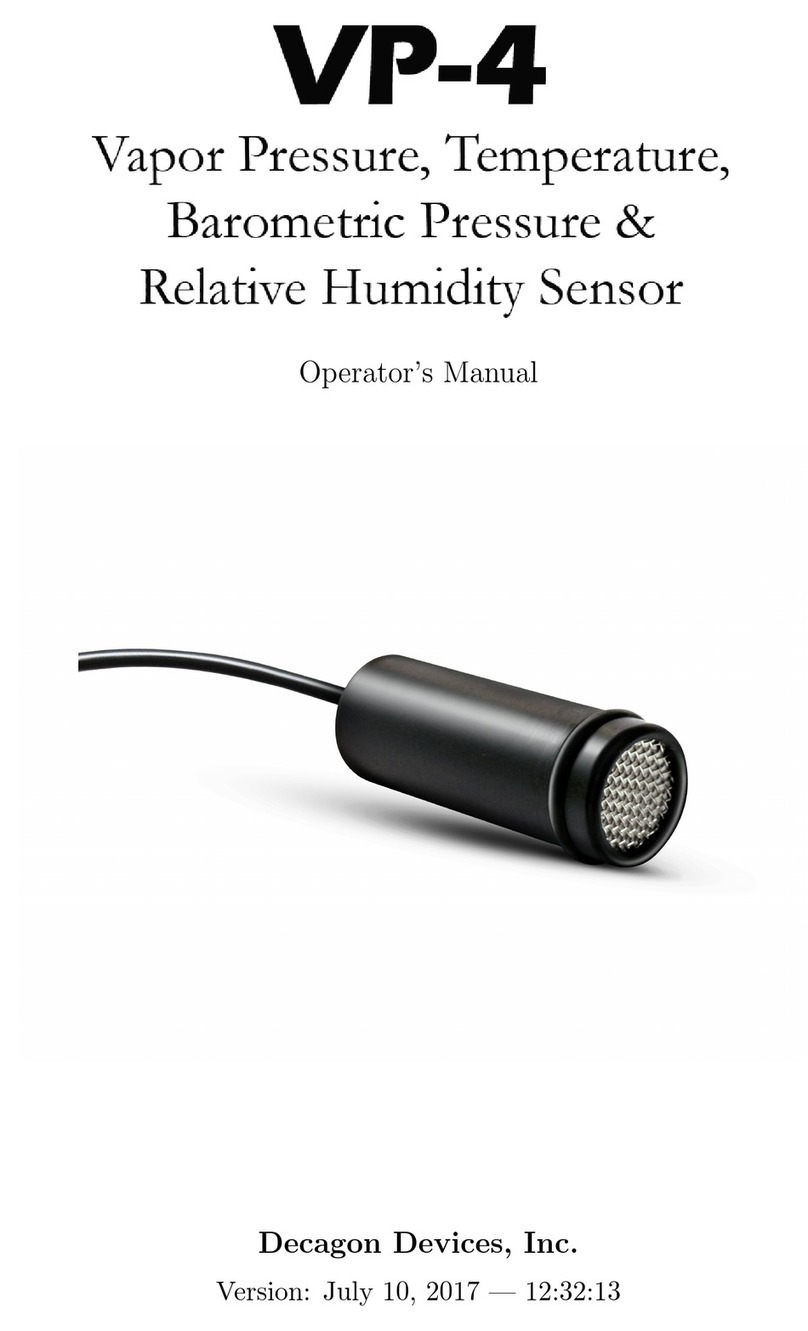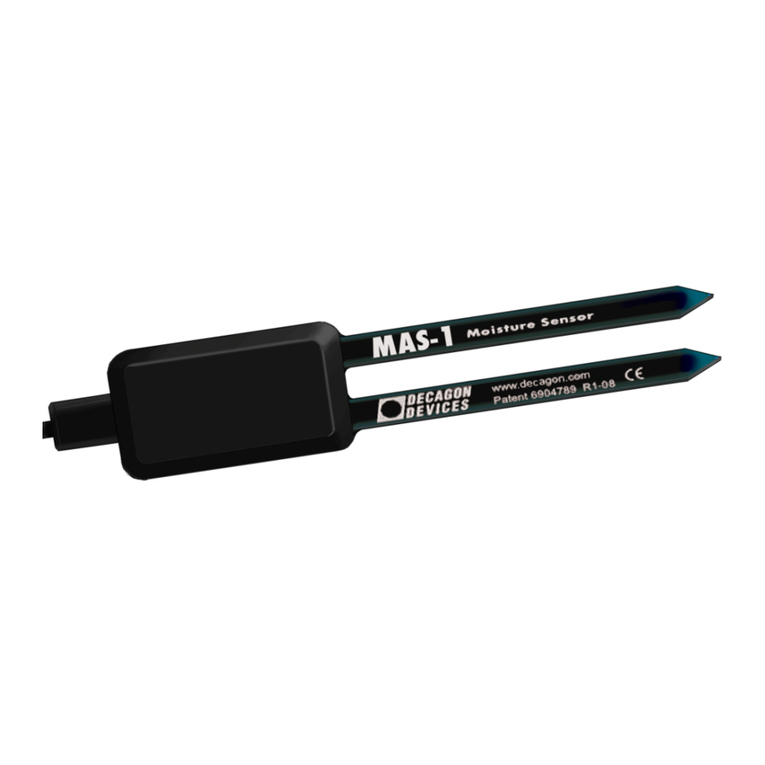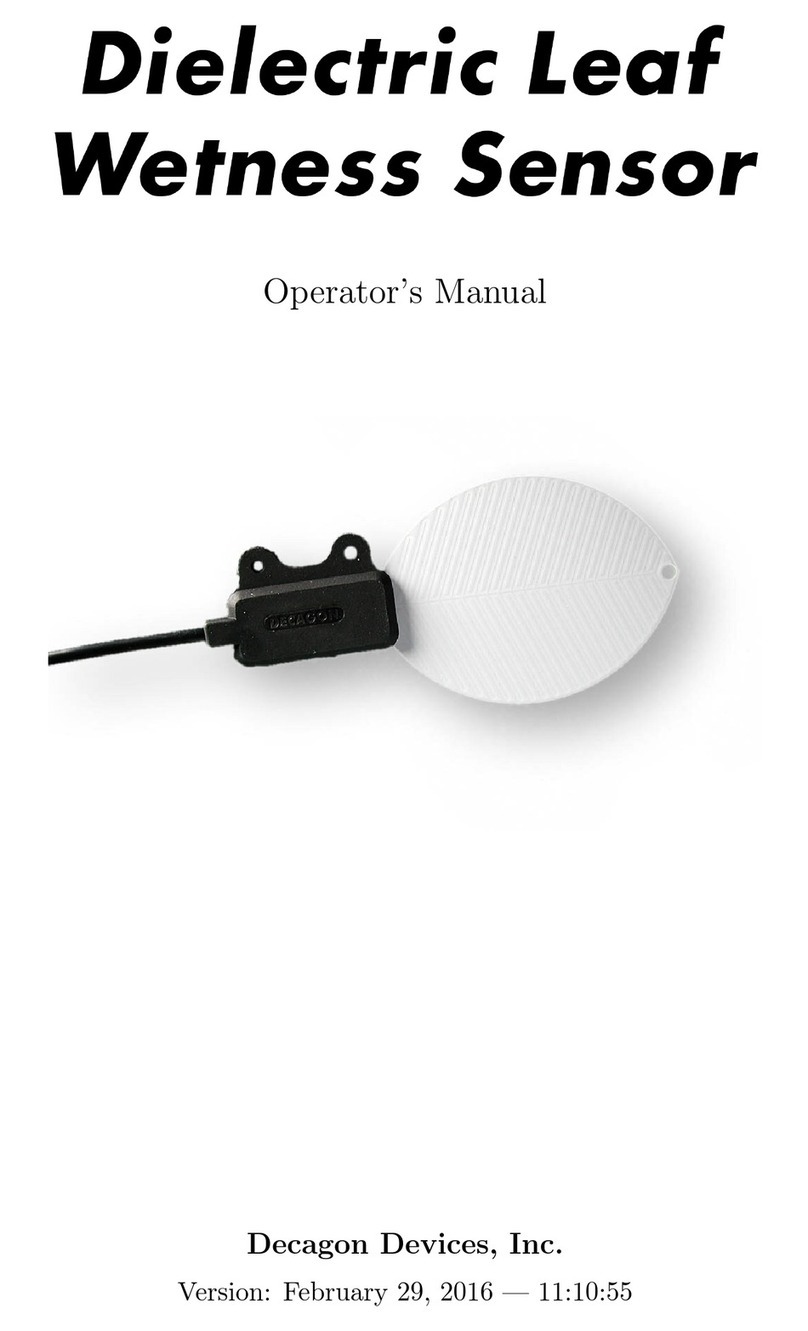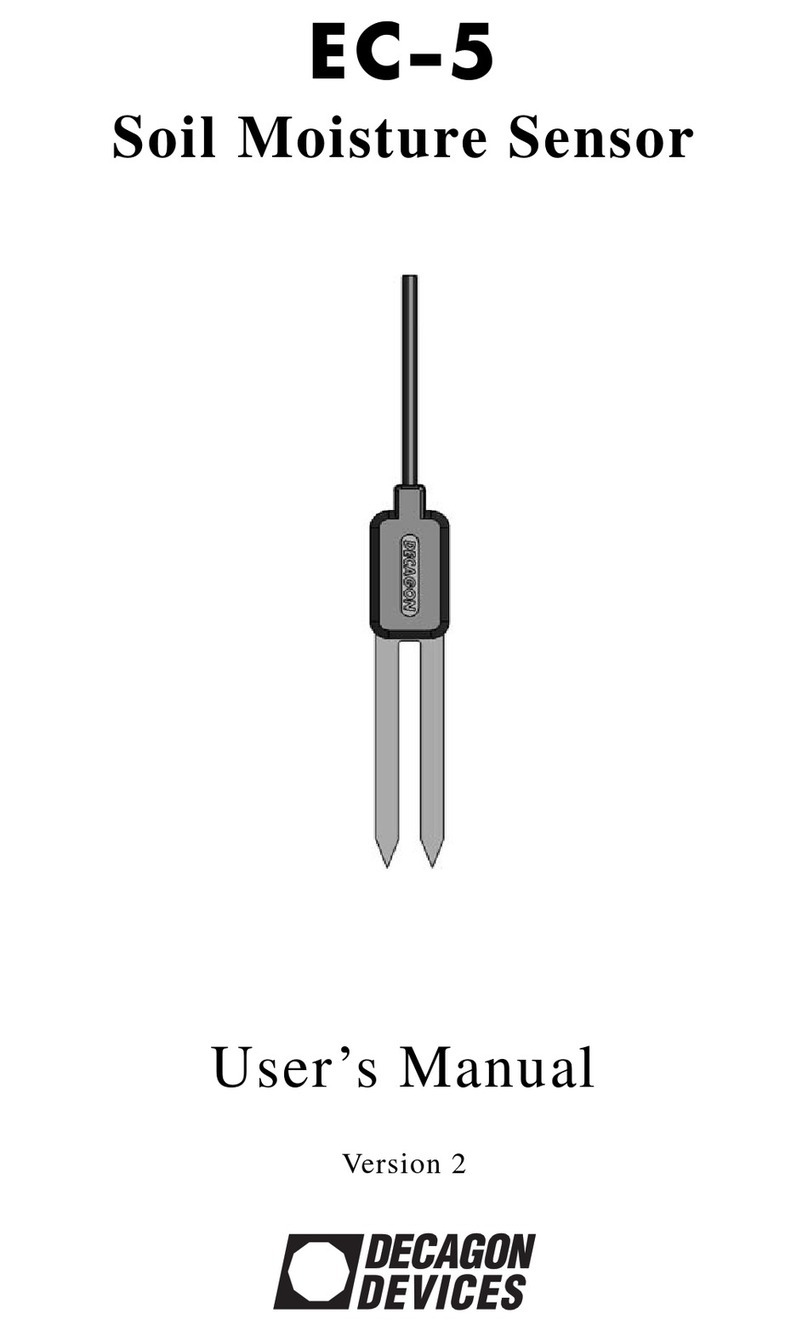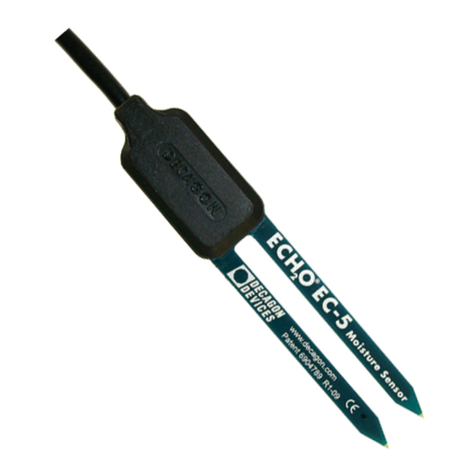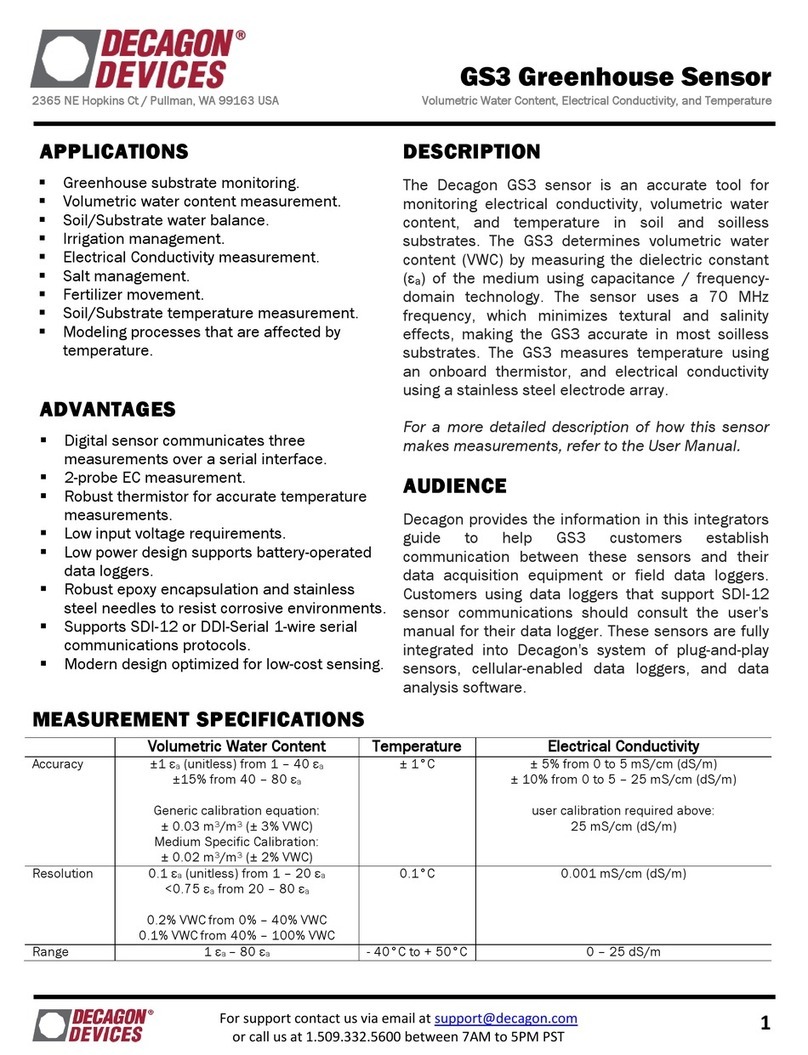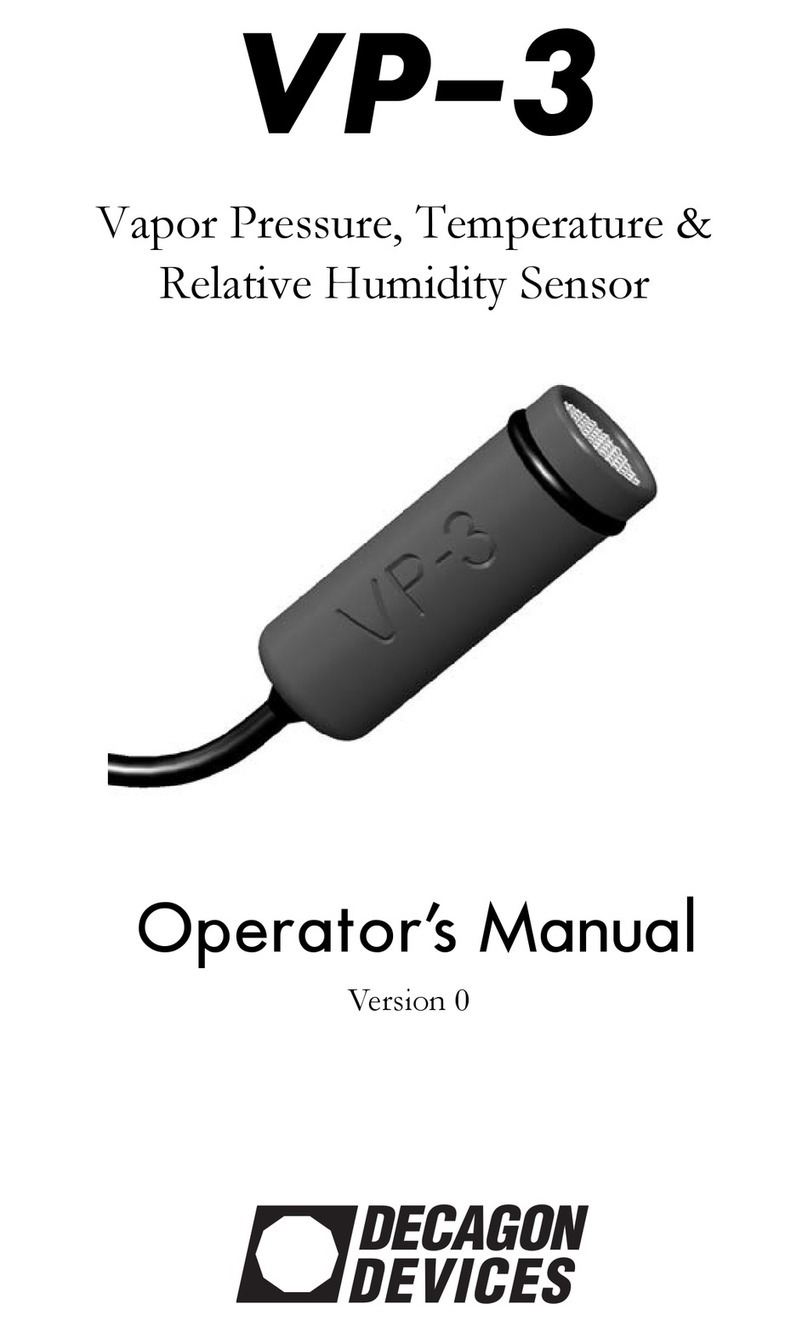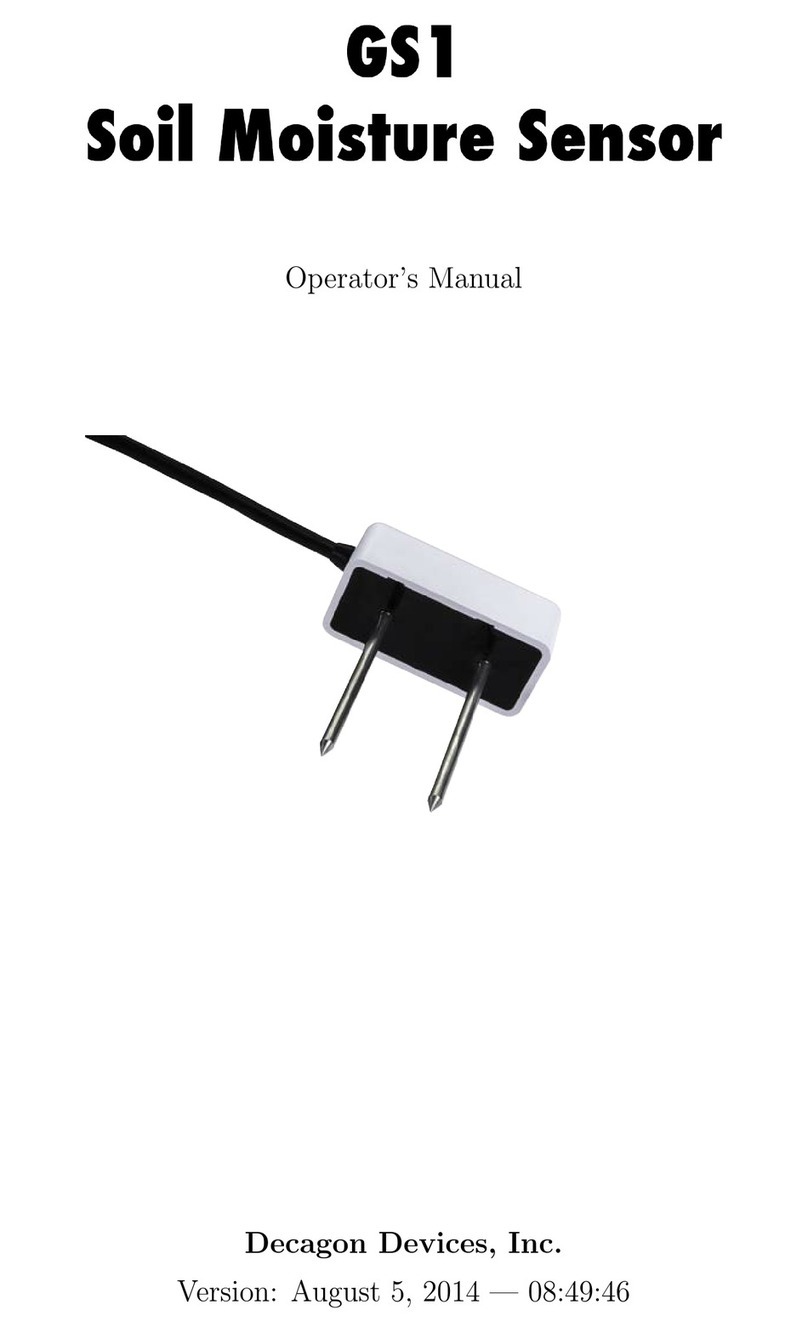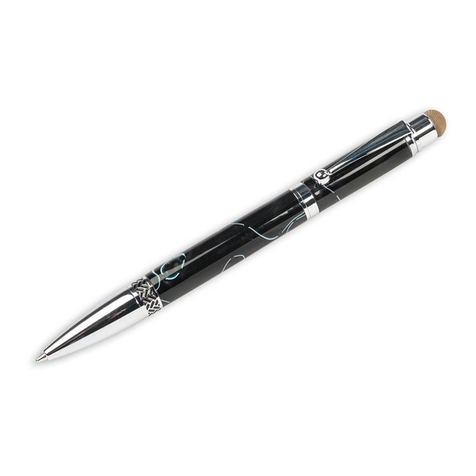3 THEORY SRS Sensors
3 Theory
Decagon designed the SRS instruments to measure the NDVI and
PRI vegetation indices from plant canopies. We caution users that
NDVI and PRI are measurements of electromagnetic radiation re-
flected from canopy surfaces, and therefore provide indirect or cor-
relative associations with several canopy variables of interest and
should not be treated as direct measurements of these variables.
NDVI has a well-established and long history of use in remote sens-
ing research and ecological applications related to canopy structure.
PRI, while showing great promise for quantifying canopy physiolog-
ical function, is far more experimental with new uses and caveats
continually being uncovered. While NDVI and PRI can be powerful
tools for inferring structure and function of plant canopies, you must
take into account their limitations when interpreting the data. Sec-
tion 3 provides an overview of the theory and discusses some of the
uses and limitations of each vegetation index.
3.1 Normalized Difference Vegetation Index (NDVI)
A number of nondestructive methods exist for remotely monitoring
and quantifying certain canopy characteristics. Some of those char-
acteristics are: foliar biochemistry and pigment content, leaf area
index (LAI, Nguy-Robinson et al., 2012), phenology, and canopy
photosynthesis (Ryu et al., 2010). One of the most common nonde-
structive techniques involves measuring the NDVI. The NDVI is one
of a large number of vegetation indices. The principle derives from
a well known concept that vegetation reflects light differently in the
visible spectrum (400 to 700 nm) compared to the near infrared (>
700 nm).
Green leaves absorb light most strongly in the visible spectrum,
but are highly reflective in the near infrared region (Figure 3). Be-
cause bare soil, detritus, stems, trunks, branches, and other non-
photosynthetic elements show relatively little difference in reflectance
between the visible and near infrared, measuring the difference be-
tween reflectance in these two bands can be related to the amount
6
